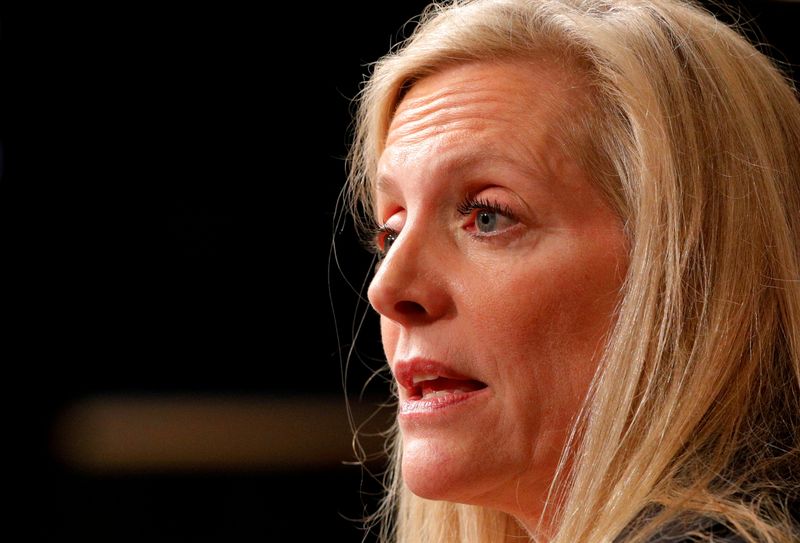(Reuters) -Growing digital currency options could lead to a “fragmentation” of the payment system that poses financial risks for households and businesses, Federal Reserve Governor Lael Brainard said on Monday in a speech that outlined the major policy questions the Fed will need to address as it explores the potential development of a digital version of the U.S. dollar.
As the holder of the world’s reserve currency, the United States must be highly involved as digital payments become more common and other countries develop digital currencies that can be used to send money across borders, Brainard said.
“The Federal Reserve is stepping up its research and public engagement on a digital version of the U.S. dollar,” Brainard said in remarks made during a virtual conference organized by CoinDesk.
Fed officials are making it clear that the U.S. central bank plans to take an active role in developing standards as more countries research and develop central bank digital currencies. Fed Chair Jerome Powell said last week that the Fed will release a paper this summer looking at how CBDCs could affect payments. Powell has also stressed that the Fed will move carefully and that congressional action may be required before the United States could develop a digital dollar.
Brainard on Monday laid out the reasons why it will be important for the Fed to stay engaged as digital payments become more common. The central bank must anticipate changing consumer trends and ensure that Americans have access to “safe central bank money,” Brainard said.
The policymaker singled out the risks posed by the development of too many privately issued stablecoins, which are digital assets linked to more traditional stores of value, such as a government-issued currency.
“If stablecoins were to be widely adopted and serve as the basis of an alternative payment system oriented around new private forms of money, there’s a real risk that you could see fragmentation of the payment system,” Brainard said.
Policymakers would also need to develop a digital currency that does not encourage a run on traditional banks and also strikes a balance between offering privacy without encouraging illicit use, she said.
“A guiding principle for any payments innovation is that it should improve upon the existing payments system,” Brainard said.
(Reporting by Jonnelle Marte and Howard Schneider; Editing by Andrea Ricci)



















